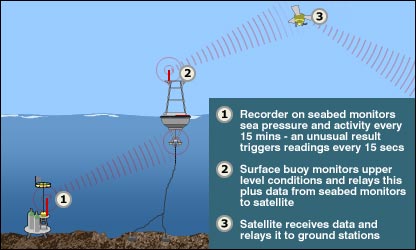GPS Data Integration To Tsunami Warning Systems Would Had Prevented Lost Of Lives

imag: newsimg.bbc.co.uk
While, the world has tsunami warning systems developed, these systems did not proved that much efficient as observed in Japan and in the Indian ocean, where thousands of lives were lost. Dr. Andreas Hoechner, lead author of the German Research Centre for Geosciences team provided this idea by stating that the information acquired from our warning systems is not that accurate.
Dr. Andreas Hoechner explained in Decoded Science that in the case of the Japanese tsunami:
“the first warning, based on traditional seismological methods, underestimated the earthquake size by a factor of more than 30 (magnitude 7.9 instead of 9.0 on the logarithmic moment magnitude scale),”
Scientists need to determine the accurate magnitude and location of the earthquake in order to have an accurate estimate of quake’s time of arrival. Study suggests that this data can be acquired using satellite-based global positioning systems (GPS).
Apparently, a team used the 2011 tsunami and stimulated its development using real time raw data. The team showed that, it would have been able to produce accurate reading of the earthquake within three minutes thus giving authorities the time to identify areas at risk and save more lives.
To minimize casualties both the warning system and authorities need to be efficient. While, it is not clear that integrating GPS data in the warning systems would had minimized casualties in Japan, accurate information would had clearly identified the areas at risk. via [Decoded Science]
